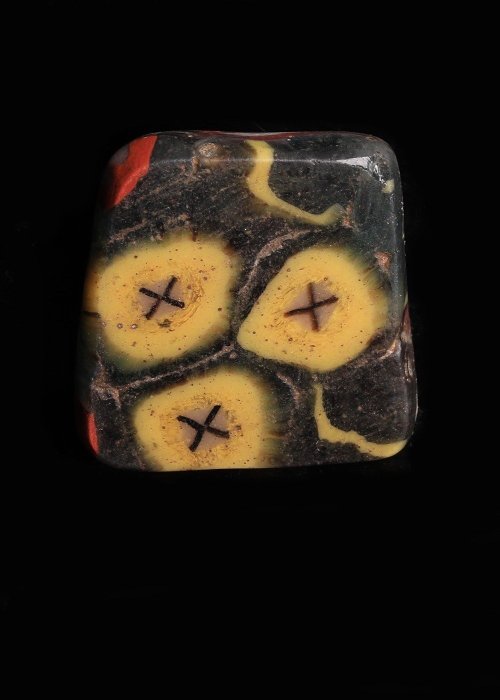
古罗马 玻璃 米色串珠项链 (没有保留价)
编号 82811233

编号 82811233

A fine Ancient Egyptian glass fragment from the Ptolemaic period, possibly from an inlay or part of a vessel. The opaque glass features a dark green background containing yellow flower-like patterns with a black cross in the centre. To the reverse, there are layers of red, black yellow and cream gradients. Some deterioration to the surface consistent with age.
The creation of millefiori patterns in glass was a time-consuming technique that took skill and patience. Thin canes of different colours were heated together in a certain order, producing the flower patterns, hence the name millefiori meaning thousand flowers. It was then fuse into one larger cane and stretched to reduce the size of the imagery and left to cool. The cane was then sliced into small discs and formed into beads or placed across a hot glassware vessel. The vessel would be blown for a second time to merge the pieces of glass and then left to cool in the desired shape. This process was originally discovered by the Egyptians when producing Millefiori glass and then later developed by the Greeks and Romans.
Measurement: L 2.2 cm x W 1.8cm
Provenance: Ex Gallery Mikazuki prior to 1984 property of a London gentleman.